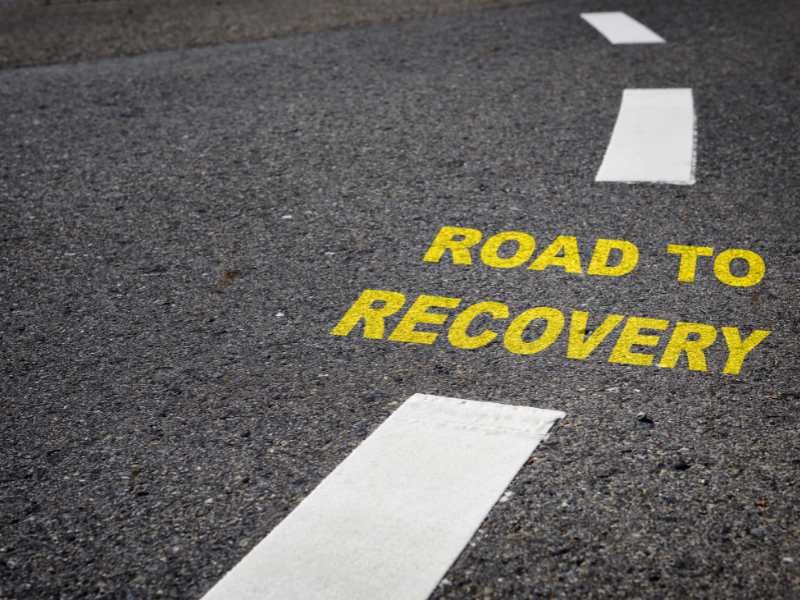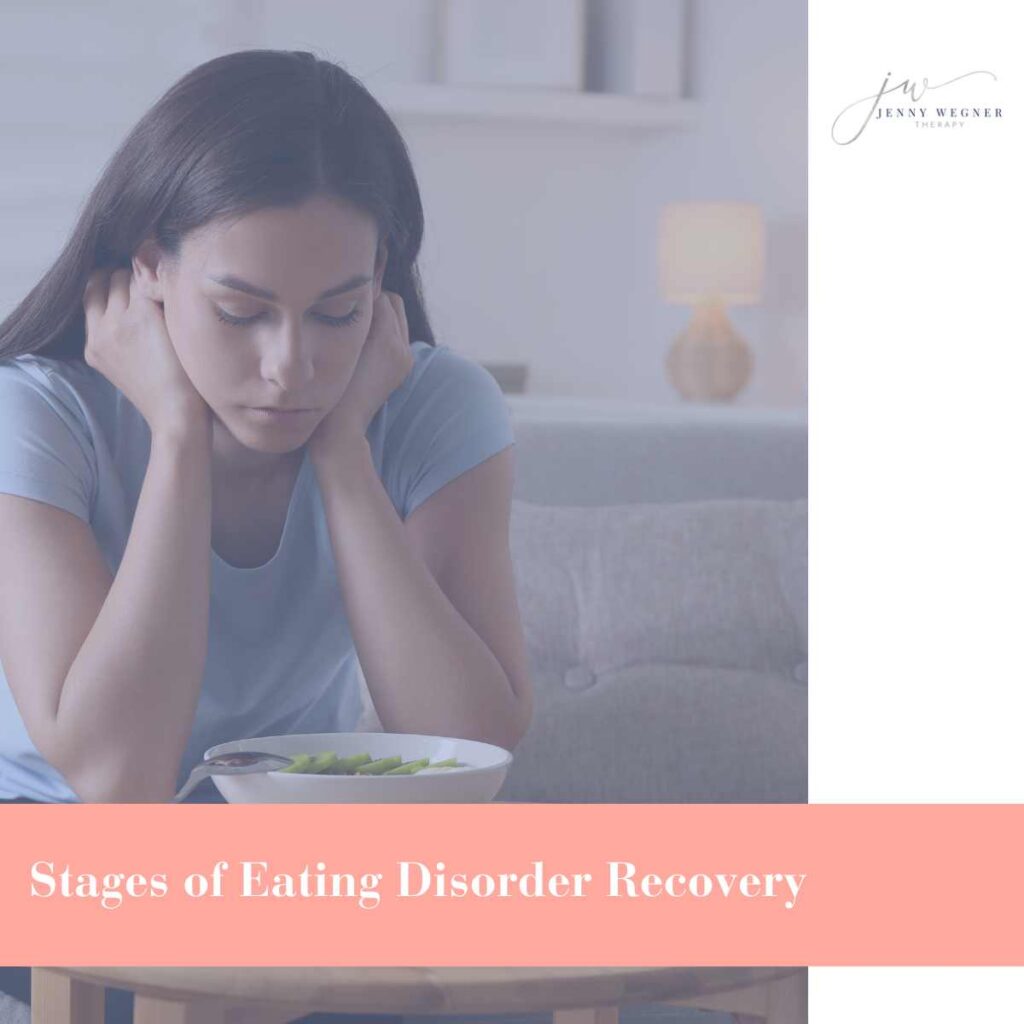There are moments in recovery when everything feels impossibly heavy. When the simple act of sitting down to a meal feels like climbing a mountain without equipment. I’ve seen this struggle reflected in hundreds of eyes across my therapy room over the past 17 years.
Recovery from an eating disorder isn’t a straight line. It’s more like a winding river—sometimes flowing smoothly, sometimes meeting rapids, sometimes doubling back on itself. But always, always moving.
The truth about the stages of eating disorder recovery is both simple and complex: healing happens layer by layer, and each person’s journey unfolds in its own time. Let’s explore what this path might look like.
Understanding the Recovery Journey

Recovery encompasses physical, behavioral, and psychological dimensions. Each element requires attention, care, and time. From my years of clinical practice, I’ve observed that understanding where you are in the recovery process can provide both comfort and direction.
The Transtheoretical Model of Change offers a framework for understanding this journey. While models can’t capture every individual experience, they help us recognize common patterns in the healing process.
The Six Stages of Eating Disorder Recovery
1. Pre-contemplation
In this initial stage, the eating disorder feels more like protection than a problem. I often see clients who are brought to therapy by concerned family members, but who themselves don’t yet recognize their behaviors as harmful.
During pre-contemplation, a person might:
- Actively defend their eating behaviors
- Minimize health concerns
- Feel that others are overreacting
- Experience the eating disorder as a solution, not a problem
If you’re supporting someone in this stage, patience is key. According to the National Eating Disorders Collaboration, confrontation often strengthens resistance. Instead, gentle questions and expressions of concern create space for awareness to grow.
2. Contemplation
This stage brings the first flickers of awareness that something might be wrong. It’s characterized by ambivalence—a painful internal tug-of-war between the comfort of familiar patterns and the possibility of change.
In my practice, I’ve sat with countless clients in this contemplation phase, witnessing their struggle as they begin to acknowledge the costs of their eating disorder while still feeling terrified to let it go.
The contemplation stage often includes:
- Recognition of problems caused by the eating disorder
- Consideration of potential benefits of recovery
- Strong ambivalence about change
- Internal conflict between recovery desires and eating disorder attachment
This stage can last for varying periods. Some clients move through it quickly once they’ve acknowledged the problem, while others may remain in contemplation for months or even years.
3. Preparation
When someone enters the preparation stage, they’ve made the decision to change and begin taking small steps toward recovery. These aren’t necessarily dramatic actions, but they represent important shifts in readiness.
During preparation, a person might:
- Research treatment options
- Reach out to eating disorder professionals
- Share concerns with trusted friends or family
- Set small, initial goals related to changing behaviors
- Begin to imagine life beyond the eating disorder
The Renfrew Center notes that this stage is crucial for building momentum. As a therapist, I focus on validating these early steps while helping clients build a realistic roadmap for the journey ahead.
4. Action
In the action stage, recovery moves from thought to practice. This is often when formal treatment begins in earnest, and when the most visible changes occur.
The action stage involves:
- Active engagement in treatment
- Learning and implementing new coping strategies
- Challenging disordered behaviors and thoughts
- Making significant lifestyle changes
- Developing skills to manage triggers and difficult emotions
According to The Emily Program, this stage requires considerable energy and commitment. It’s not uncommon to experience both progress and setbacks as new habits form and old patterns are disrupted.
5. Maintenance
Maintenance is where recovery begins to take root more deeply. The focus shifts from making changes to sustaining them over time and across different situations.
During maintenance, individuals:
- Continue practicing recovery skills
- Develop strategies for navigating potential triggers
- Apply recovery principles across diverse situations
- Build a life that supports ongoing wellness
- Learn to recognize and address warning signs of relapse
I remind my clients that maintenance isn’t about perfection. The National Eating Disorders Association emphasizes that slips are normal parts of the recovery process. What matters is the ability to recognize when you’re struggling and implement your recovery tools.
6. Termination/Recovered State
Some models include a final stage representing sustained recovery with minimal risk of relapse. However, many experts view recovery as an ongoing process rather than a destination with a clear endpoint.
In my practice, I’ve found that clients eventually reach a place where the eating disorder no longer dominates their lives. Food becomes food again—not a source of anxiety or comfort or control. The body becomes a home to live in rather than a project to perfect.
This doesn’t mean life becomes perfect or challenges disappear. Rather, the person has developed a robust set of skills and perspectives that allow them to face life’s difficulties without returning to eating disorder behaviors.
The Three Dimensions of Recovery

Beyond the stages of change, recovery encompasses three interconnected dimensions that must each be addressed for comprehensive healing.
Physical Recovery
Physical healing forms the foundation of eating disorder recovery. Without stabilizing the body, psychological healing remains elusive.
Physical recovery includes:
- Weight restoration (if needed)
- Normalization of vital signs and lab values
- Restoration of hormonal balance
- Return of menstruation (if applicable)
- Addressing medical complications
According to Peachy Nutrition, physical recovery follows predictable phases, though the timeline varies by individual:
- Initial rehydration and electrolyte balancing
- Rebuilding of lean body mass
- Restoration of essential body fat
Many clients are surprised by the physical challenges of recovery. Common experiences include fluid retention, digestive discomfort, fatigue, and changes in body composition. I always remind my clients that these symptoms are temporary and signs of healing—your body is working incredibly hard to repair itself.
Behavioral Recovery
The behavioral dimension involves changing actions and patterns related to food, exercise, and body checking.
Behavioral recovery includes:
- Normalizing eating patterns
- Eliminating restriction, binging, and purging behaviors
- Developing a healthier relationship with exercise
- Reducing body checking and avoidance behaviors
- Creating sustainable daily routines
In my practice, I’ve found that behavioral changes often precede emotional acceptance. Clients may follow their meal plan perfectly while still experiencing intense anxiety. This doesn’t mean recovery isn’t working—it means you’re building new neural pathways that will eventually become more comfortable.
Psychological Recovery
The psychological dimension of recovery is often the most challenging and time-intensive. It involves addressing the thoughts, beliefs, and emotional patterns that maintain the eating disorder.
Psychological recovery includes:
- Reducing preoccupation with food, weight, and shape
- Challenging distorted beliefs about self-worth
- Developing healthier coping mechanisms for difficult emotions
- Addressing underlying issues like trauma, anxiety, or depression
- Building a sense of identity beyond the eating disorder
Research consistently shows that psychological recovery often lags behind physical and behavioral improvements. This means you might be physically stable and following your meal plan but still struggling with eating disorder thoughts. This doesn’t mean you’re failing—it’s a normal part of the process.
Partial vs. Full Recovery: An Important Distinction

One of the most significant insights from recent research is the distinction between partial and full recovery.
Partial recovery typically means achieving physical and behavioral milestones—reaching a healthy weight, normalizing eating patterns, and eliminating compensatory behaviors—while still experiencing significant eating disorder thoughts and body image distress.
Full recovery encompasses all three dimensions: physical, behavioral, and psychological. In full recovery, not only has the body healed and behaviors normalized, but the person has also achieved a healthier relationship with food, body, and self-worth.
Research published in The International Journal of Eating Disorders demonstrates that individuals who achieve full recovery show significant improvements in perfectionism, negative emotions, and quality of life compared to those who are only partially recovered.
In my practice, I emphasize the importance of continuing treatment beyond initial weight restoration and behavioral changes. Full recovery is possible and worth pursuing, even when it takes longer than expected.
Recovery By the Numbers

Understanding recovery statistics provides important context for the journey:
- Approximately 46% of people diagnosed with an eating disorder achieve full recovery, according to Koru Spring
- Recovery rates vary by disorder:
- Anorexia Nervosa: 50-70% achieve good to intermediate outcomes
- Bulimia Nervosa: Approximately 70% achieve recovery
- Binge Eating Disorder: Around 45% achieve full recovery
Several factors influence these outcomes:
- Duration of illness (longer duration correlates with poorer outcomes)
- Early intervention significantly improves prognosis
- Co-occurring mental health conditions may complicate recovery
- Strong social support systems improve outcomes
A particularly significant finding is that shorter illness duration strongly predicts better outcomes. Research shows that eating disorders lasting longer than 6-7 years result in significantly lower recovery rates following treatment, highlighting the importance of early intervention.
Common Challenges Throughout Recovery

Recovery isn’t easy, and acknowledging the challenges helps prepare for them. Here are some common hurdles I’ve observed in my practice:
Physical Challenges
- Fluid retention and bloating, especially in early refeeding phases
- Severe fatigue and body aches
- Gastrointestinal distress including gas, cramping, and irregular bowel movements
- Extreme hunger that may feel insatiable
- Changes in body composition and weight distribution
Many of these physical challenges are discussed in online recovery communities like Reddit’s r/fuckeatingdisorders, where people share lived experiences and support.
Psychological Challenges
- Fear of weight gain and body changes
- Loss of identity connected to the eating disorder
- Anxiety about eating in social situations
- Perfectionism that may manifest in other areas of life
- Managing negative emotions without using eating disorder behaviors
Research indicates that negative emotional experiences—including depression, anxiety, and perceived stress—are significantly lower in fully recovered individuals compared to those who are partially recovered or have active eating disorders, according to a study on Negative Affective Experiences in Relation to Stages of Eating Disorder Recovery.
Recovery in the Digital Age

Social media presents both challenges and opportunities for eating disorder recovery:
- Triggering content can be pervasive on certain platforms
- Comparison with others can hinder one’s own recovery process
- However, recovery-oriented communities can provide valuable support
Research examining Twitter communications about eating disorders identified major themes including body image concerns, eating disorder consequences, and treatment information.
The COVID-19 pandemic further illustrated how digital spaces impact recovery, with many individuals reporting worsening symptoms during lockdowns due to isolation and disrupted treatment, as documented in research understanding the conversation around COVID-19 and eating disorders.
As a therapist, I encourage clients to be mindful of their social media consumption, curating feeds that support rather than undermine recovery efforts.
Implications for Treatment
Research findings have several important implications for treatment approaches:
- Early intervention is critical: Research consistently shows that early treatment significantly improves outcomes and reduces the risk of chronic illness.
- Comprehensive treatment is necessary: Addressing only physical and behavioral aspects while neglecting psychological recovery results in higher relapse rates.
- Support systems are essential: Social support emerges as a key factor in successful recovery, often improving before other psychological factors.
- Recovery timeframes are extended: Full recovery, especially psychological recovery, often takes significantly longer than commonly recognized, with metabolic and psychological healing continuing for 6-12 months after weight restoration.
- Relapse prevention requires attention: Given the high rates of relapse, dedicated focus on relapse prevention strategies is essential for long-term recovery.
My Approach to Supporting Recovery

After 17 years working with eating disorders, I’ve developed an approach that honors the complexity of recovery while providing concrete support. At Jenny Wegner Therapy, I focus on:
- Creating a safe, non-judgmental space for exploration
- Addressing not just eating disorder behaviors but underlying emotional needs
- Providing education about the recovery process and what to expect
- Supporting both clients and their loved ones through the journey
- Building skills for long-term sustainable recovery
Whether you’re struggling with anorexia nervosa or supporting someone with body image issues, understanding the recovery process can help provide context and hope.
Recovery Is Possible
What I wish everyone knew about eating disorder recovery is this: full recovery is possible, even when it feels impossible. The path isn’t linear, and it doesn’t look the same for everyone. But with appropriate support, commitment, and time, people can and do recover.
Recovery means more than just normalized eating and weight. It means developing a peaceful relationship with food and your body. It means reclaiming your life and discovering who you are beyond the eating disorder.
If you’re in the midst of this journey, be gentle with yourself. Recovery takes time, and each stage brings its own challenges and victories. Wherever you are in the process, you’re not alone, and you don’t have to figure it all out by yourself.
The road to recovery may be long, but it leads to a place worth reaching—a place where food is just food, your body is just your body, and you are free to live the full, rich life you deserve.
Author
-

Jenny Wegner is an eating disorder specialist with 17+ years of experience helping people overcome their eating disorders. Today, she has helped hundreds of people achieve a full recovery.
View all posts


